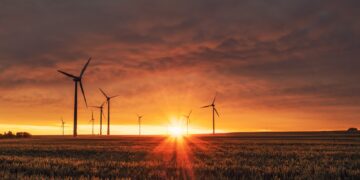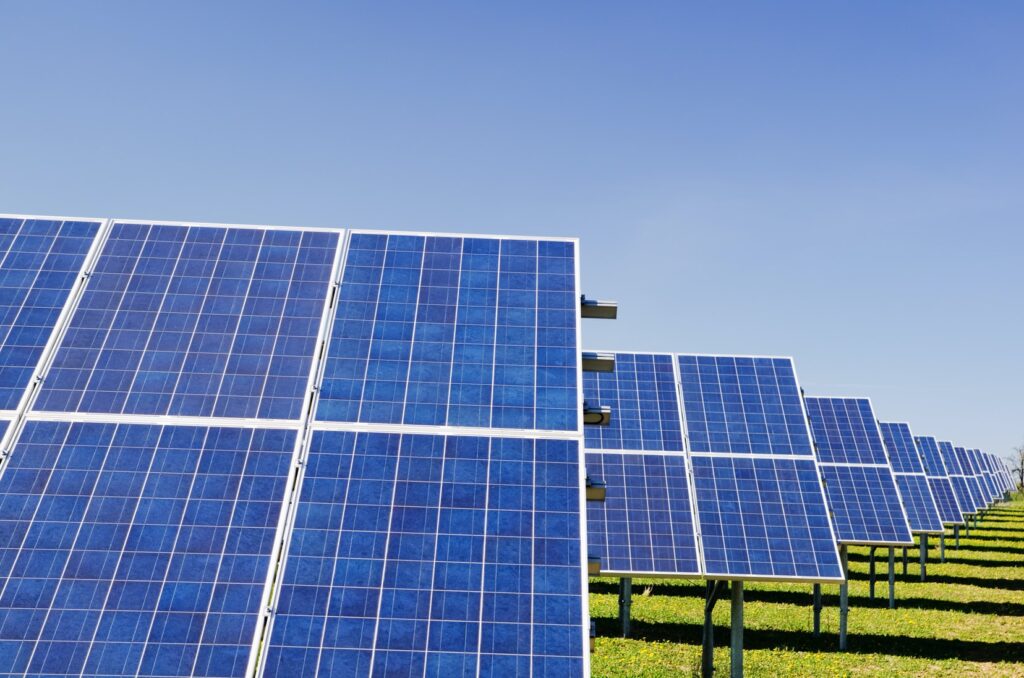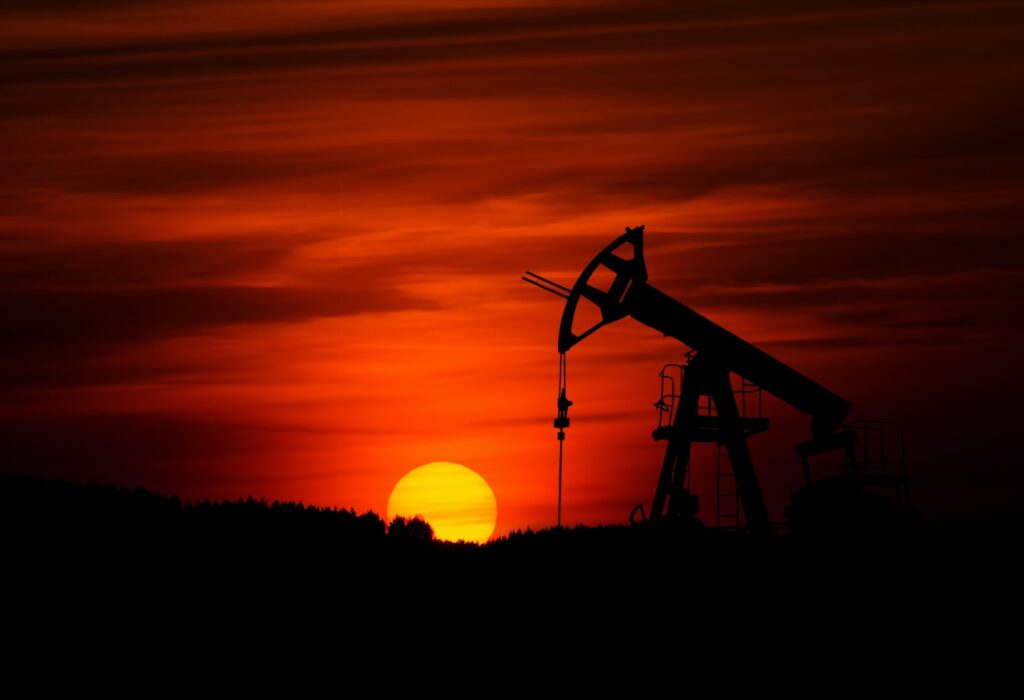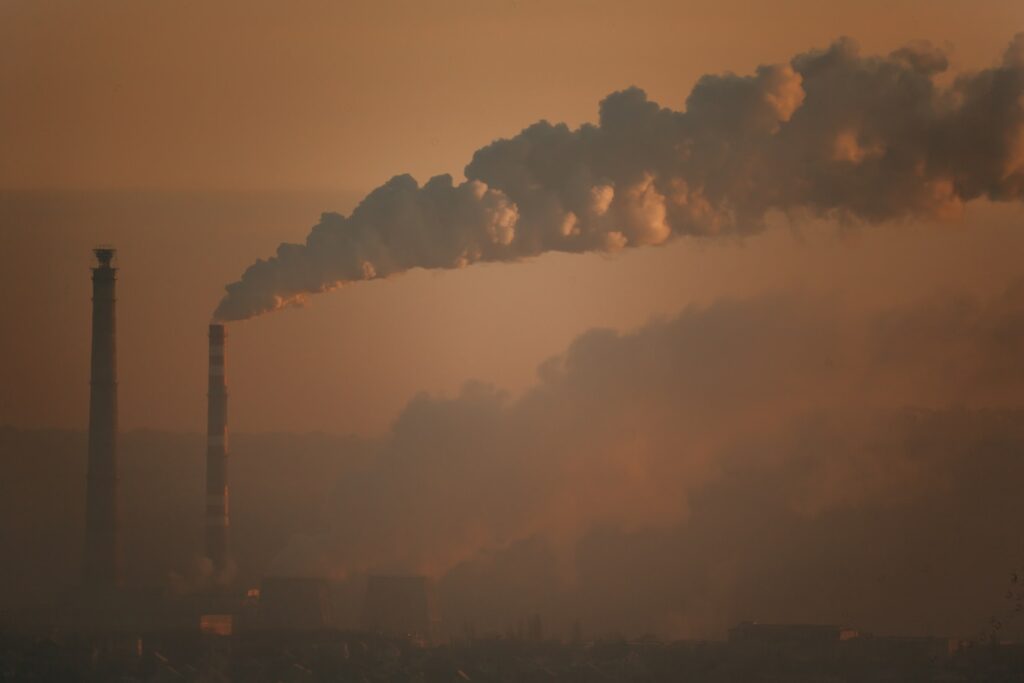All of us are surrounded by energy: within our bodies, our homes, our environment… Energy is there, in our daily life, but what is energy? Which forms of energy are there? What are its sources? What do the terms “primary energy”, “secondary energy”, “renewable energy”, “non-renewable energy”, “fossil energy” mean? Stay tuned as in this article we want to answer all of your questions regarding energy!
What is energy?
The term “energy” comes from the ancient Greek “energia”, meaning “force in action”. The scientific concept first appeared with Aristotle and has evolved greatly over time. Nowadays, energy means “the ability to perform transformations”. For instance, energy is what allows to provide work, to produce a movement, to modify the temperature or to change the state of the matter. All human actions require energy: moving, heating, making things and even living.
Energy resources: what they are and how they are used
Access to energy resources is a fundamental factor for the development of a country, both in economic and social terms. The energy comes in different forms that as we will see are convertible into each other. As an example, the chemical energy produced by the combustion of naphtha is used in thermoelectric power plants to produce steam which drives turbines. The kinetic energy is in turn converted by the alternators into electrical energy and this, in homes and industries, is again converted into other forms such as light, thermal and mechanical energy.
Electrical energy
In our modern society to perform any activity we need some form of energy and between all the existing forms, electrical energy is certainly the most useful because it can be transformed and transported in a fairly simple way.
The enormous quantities of electrical energy required lead to its production in large quantities: the power (unit: watt) is just a measure of the amount of energy produced.
Non-renewable energy sources
Electricity production in many countries is largely done by using non-renewable energy sources (e.g. oil, coal and natural gas) and a smaller percentage of renewable energy sources and this will be discussed in more detail in the paragraphs dedicated to energy sources and renewable energies.
The use of pressurized steam to create electricity
Electricity generation, transport and distribution makes sure that it reaches the end user. Electricity production takes place in power plants with techniques based mainly on the use of pressurized steam: the pressurized water is heated to very high temperatures, the steam generated expands in a turbine connected to an alternator.
Energy sources and power plants for energy production
Depending on the energy source used, power plants can be classified, for example, as thermoelectric, hydroelectric, wind, geothermal, solar, nuclear. In thermoelectric power plants, a combustible element (e.g. petroleum derivatives, biomass) is burned, generating heat that is transmitted to a boiler, in which high-pressure water circulates and is converted into steam at high temperatures.
Hydroelectric power plants
Hydroelectric power plants use the kinetic energy of water to generate electricity (they have lower environmental impact than thermoelectric power plants). Likewise, wind power plants use the kinetic energy of wind to produce electricity through a wind generator.
Geothermal power plants
Geothermal power plants are thermal power plants which exploit the natural heat of the geothermal vapors stored underground (geothermal energy) with no need for any combustion process.
Power plants with solar panels
Photovoltaic power plants convert solar energy directly into electricity, while in nuclear power plants the necessary heat is obtained from a controlled nuclear fission chain process inside the reactor.
Energy Sources
In the following section, we will talk about different energy sources that are out there. Stay tuned.
Primary Energy Sources
The primary energy sources are those whose energy content can be used directly (energy products in their natural state such as coal, crude oil, nuclear fuels, hydraulic and geothermal energy) and whose transformation in other form derive the secondary energy sources.
Following the transformations carried out by the energy sector, energy can be delivered to users for end uses (e.g. civil, industrial) and energy demand can be distinguished in relation to these (heat, lighting, mechanical movement, etc.) or energy form (mechanical energy, electrical energy, thermal energy).
Fossil energy sources: coal, oil, methane
Starting from the Industrial Revolution, the economic development and the technological progress of mankind have been largely based on the use of fossil fuels. Roughly 80% of the energy consumed by humans – from electricity to the heat used to keep homes warm and for industrial processes – is actually produced through the combustion of oil, coal and methane, fossil fuels that are non-renewable sources, i.e. they tend to be depleted with consumption.
The problem of environmental sustainability
As underlined by ENEA (National Agency for Technologies, Energy and Sustainable Economic Development), this represents one of the main causes of environmental pressure on our planet and it is consequently fundamental to direct the choices of the future on the path of “sustainability”.
Renewable energy sources
The renewable energy sources are non-fossil energy sources that regenerate naturally at least as fast as they are consumed, are available in nature, and are not subject to depletion caused by human use.
The technology behind renewables
Furthermore, renewable sources are those for which there is technology that enables their use for energy purposes. As previously mentioned, plants powered by renewable sources are those that use the sun, wind, water, geothermal resources, tides, wave motion and the transformation of organic and inorganic waste or biomass to generate electricity.
Waste recovery for energy production: biogas
Several studies are currently aimed at developing technologies and reactions to extract energy from waste, some of them can be transformed into an excellent fuel. One of the ways to generate energy from waste is, for example, the recovery of biogas, i.e. the gases produced by the decomposition of organic material (e.g. the wet fraction of municipal solid waste).
Thanks to the actions of bacteria and microorganisms contained in the organic matter itself, fermentation can begin.
Also Read:
- How Chemistry Is Used in Everyday Life
- Discover 8 Sunken Cities under the Sea
- How to Make Elephant Toothpaste in 7 Steps
- 7 Cool Science Experiments for Kids
- 23 Legendary Aircrafts that Made the History of Aviation
- What Is Quantum Physics?
Assimilated energy sources
Assimilated energy sources are energy resources with fossil origin that are assimilated to renewable sources due to their high energy yields. Plants powered by assimilated sources are, for example, ones that use waste heat, exhaust fumes and other forms of recoverable energy in production processes and plants, and those that use processing waste, as well as those that use fossil fuels from smaller isolated deposits.
Potential for Renewable Energy
In contrast to fossil and nuclear fuels, which are polluting and obsolete energy sources, renewable sources – such as the sun, wind, sea and the Earth’s heat – are endless, clean and safe. In many European countries, for example in Italy, renewable sources account for more than 37% of electricity production. A 100% renewable future is not utopia but a great opportunity in Italy, Europe and the world. A hopeful answer to the dramas caused by climate, wars for oil, economic crisis”.
International Energy Agency estimates
At the global level, according to estimates of the International Energy Agency in 2013, 40% of the growth in total energy demand from now until 2035 will be met with the renewable energy.
The opinion of ISPRA
ISPRA (Institute for Environmental Protection and Research) underlines that a key role will be played by solar and wind power, accounting for 45% of the total energy produced by renewables, although fossil fuels will remain essential to feed our thirst for energy (pushing the world towards a temperature increase of 3.6 ° C over pre-industrial levels).
To better understand what we are talking about when we talk about energy and forms of energy, however, we need to go and find out what it means on a physical level.
The concepts of energy and work in physics
The energy is one of the key concepts in physics science and is defined as the ability of a body or, more generally, of a physical system to do work and the measure of this work is also a measure of energy. Therefore, a body that has energy is capable of performing work, and the work of a force allows a portion of the energy to be transformed from one form to another.
Fun Fact: Human body generates energy: It has been calculated that if a person screamed without interruption for 8 years, 7 months and 6 days, they would produce enough energy to heat a cup of coffee.
Work of a force (W) is a quantity that measures the effect of combining a force with a displacement. When force (F) and displacement (s) have the same direction and direction (parallel) the work can be expressed as: W=F x s.
What is joule?
In International System (SI) the unit of work is the joule (J), which is equivalent to newton (N, the unit of force) x meter (m, the unit of displacement): 1 joule is the work done by a force of 1 newton when its point of application moves 1 meter.
Thermodynamics
Thermodynamics is a field of physics that focuses on the energy exchanges that happen between the thermodynamic system (portions of matter ideally isolated from everything else) and the environment. The purpose of studying the energy exchanges that occur during a physical or chemical transformation is to identify the equilibrium or spontaneous evolution conditions of the system itself.
The thermodynamic system and the equilibrium condition
A thermodynamic system will naturally tend to reach the equilibrium condition, the one in which the parameters pressure, temperature and volume remain constant over time.
The first principle of thermodynamics
The first law of thermodynamics describes the principle of conservation of energy, but does not provide information about the “direction” that processes take naturally.
We can experimentally observe that a cold cube of steel placed in a glass of hot water will heat up while the water cools down. In practice, the first principle of thermodynamics tells us that the total amount of energy does not change (the energy transferred is equal to the energy absorbed) but it does not tell us the direction of heat transfer.
The Second Principle of Thermodynamics
According to the second principle of thermodynamics it is impossible to realize a transformation whose only result is to transfer heat from a colder body to a hotter one, without the contribution of external work.
The third principle of thermodynamics and entropy
Thermodynamics third principle tells us that “the entropy of a perfectly pure crystal at the temperature of absolute zero is zero” and can be interpreted also as the impossibility to cool natural bodies at the temperature of absolute zero in a finite time.
Internal energy of a thermodynamic system is given by the sum of kinetic energy and potential energy of the particles that compose it.
Fun Fact: Did you know how corn turns into popcorn? Using thermodynamics! The inside of the corn is composed of starch, the outside is a hard shell that is difficult to break. While cooking, the kernel becomes a small pressure cooker: some of the water turns into steam, whereas most of it remains liquid. When the temperature inside exceeds 180° and 9 atmospheres, the kernel literally explodes, releasing the starch which solidifies in the white foam typical of pop-corn.
Kinetic energy
The kinetic energy (from Greek, energy of movement) of a molecule is linked to the different types of movement that the molecule itself is capable of performing. Likewise, the kinetic energy of a system is equal to the sum of the kinetic energies of the molecules that constitute it, and is directly proportional to the temperature of the system itself (it is therefore called thermal energy).
Potential energy
The potential energy of a molecule is instead determined by the reciprocal position of the atoms that form the molecule and by the forces of intramolecular bonds and, in a system consisting of several molecules, also by the intermolecular forces (it is therefore defined chemical energy).
Thermal energy and chemical energy
There is always an exchange between thermal energy and chemical energy in chemical reactions. These reactions’ products are molecules that are formed by the breaking of the bonds of the molecules of the starting reagents with the consequent formation of new bonds.
How chemical reactions work
It is possible for a chemical reaction to proceed naturally if the free energy of the products is less than the free energy of the reactants. In case the products contain less potential energy (chemical energy), the excess energy is transformed into kinetic energy or thermal energy (heat), which the system gives to the environment (exothermic reactions).
Heat and the zero law of thermodynamics
Heat is the transfer of energy between bodies or, more simply, it can be defined as a form of energy that can pass from a body to the outside (exothermic reactions) or vice versa (endothermic reactions). According to the so called zero law of thermodynamics, “between two bodies at the same temperature there is no passage of heat” because in general, as we experience ourselves, the passage of heat occurs from the hottest body to the coldest one.
In the next paragraphs we will try to explain the macroscopic meaning of kinetic energy and potential energy.
Kinetic energy: definition, examples, formula
Kinetic energy is the energy possessed by a body of mass m moving at a velocity v and measures the ability of an object to perform work due to being in motion. This is expressed by the formula: K=1/2 mv2 [B1] where K, m, and v denote the kinetic energy (J), mass (Kg), and velocity (m/s) of the body, respectively.
Kinetic energy theorem
The kinetic energy theorem says, ” The work performed by the resultant of forces applied to a material point along a stretch AB is equal to the change in kinetic energy undergone by the point in question as it moves from A to B.”
Basically, the kinetic energy theorem tells us that if a body has an initial kinetic energy Ki and a force acts on it performing work W, the final kinetic energy Kf will be given by the sum of Ki and W (Kf = Ki + W). Thus:
- When the initial kinetic energy is zero, Kf = W where W indicates the work that the force must do to set a body of mass m in motion up to a velocity v.
- On the other hand, when the final kinetic energy is equal to zero, Ki = – W or the initial kinetic energy is equal to the work needed to stop a body of mass m that starts with a velocity v.
Positive and negative kinetic energy
In general, a work always implies a variation of kinetic energy that can be positive (in case of motor work) or negative (in case of resistant work).
Please remember that when we talk about work, we mean the work derived from the sum of the work of the single acting forces. If the resulting work is positive, there is an increase in kinetic energy; vice versa if it is negative, there is a decrease in kinetic energy.
Potential energy: definition, characteristics, formula
A stationary body possesses potential energy simply by occupying a certain position with respect to the ground, and as a measure of this energy, one can take that of the work done by the weight force. Since it is equal to work, potential energy is also measured in joules.
Gravitational potential energy
The potential energy possessed by a body that is at a certain height (h) on the earth’s surface is called gravitational potential energy (or weight force) and is expressed by the formula U=mgh where m indicates the mass of the body (kg), g the acceleration of gravity (m/s2) and h the height at which the body is located (m).
The gravitational potential energy of a body is equal to the work done by the force-weight when the body moves from the initial position to the reference position (zero level).
This energy is independent from the speed of the body and varies with the variation of its position: falling, the body progressively loses the ability to perform work until it is nullified reaching the earth’s surface where the potential energy will be zero.
The work performed by the weight force when a body moves from a point A to a point B will be independent from the trajectory followed and given by the formula W=UA – UB. From the latter it follows that:
- If the potential energy decreases, the work is positive;
- If potential energy increases, work is negative.
Conservation of mechanical energy
According to the law of conservation of mechanical energy, when considering a body moving under the action of weight force alone (negligible friction), the sum of kinetic energy and potential energy (two different forms of mechanical energy) remains constant during motion.
The return elastic force
By considering a body of mass m subject to an elastic force of recall, the total energy of the oscillator will be given by the sum of the elastic energy of the spring (maximum at the extremes of oscillation) and the kinetic energy of the body (maximum at the center of oscillation, where velocity is maximum).
Like what we have seen for the weight force, in such a system the total energy of the oscillator is constant during the oscillation, i.e. there are conversions of energy from kinetic to elastic form and vice versa but their sum is constant.
Is it possible to produce energy? Can it be destroyed?
No. Energy can only be transferred from one body to another and converted from one form to another. In doing so, the energy of one body decreases and that of the other increases by the same amount. The total energy remains unchanged.
Why do we have energy problem?
All transfers and transformations of energy always produce some heat that is released into the environment. We (i.e. humans) can now no longer use it. It is therefore considered “lost”. Then we talk about “energy consumption” to express that energy – under a well accessible and convertible form – is converted into another – not available for us anymore. Thereby it spreads very fast in the environment and is finally emitted as infrared radiation from the earth into space.
Where does the energy come from?
All the energy we find on earth is either transformed solar energy (wind energy, energy stored in oil, …) or nuclear energy (energy received by atomic nuclei during the big bang or star explosions).
In this article we tried to answer all of your questions regarding what is energy, if you have any further questions don’t hesitate to aske in the comments section below.























































Discussion about this post